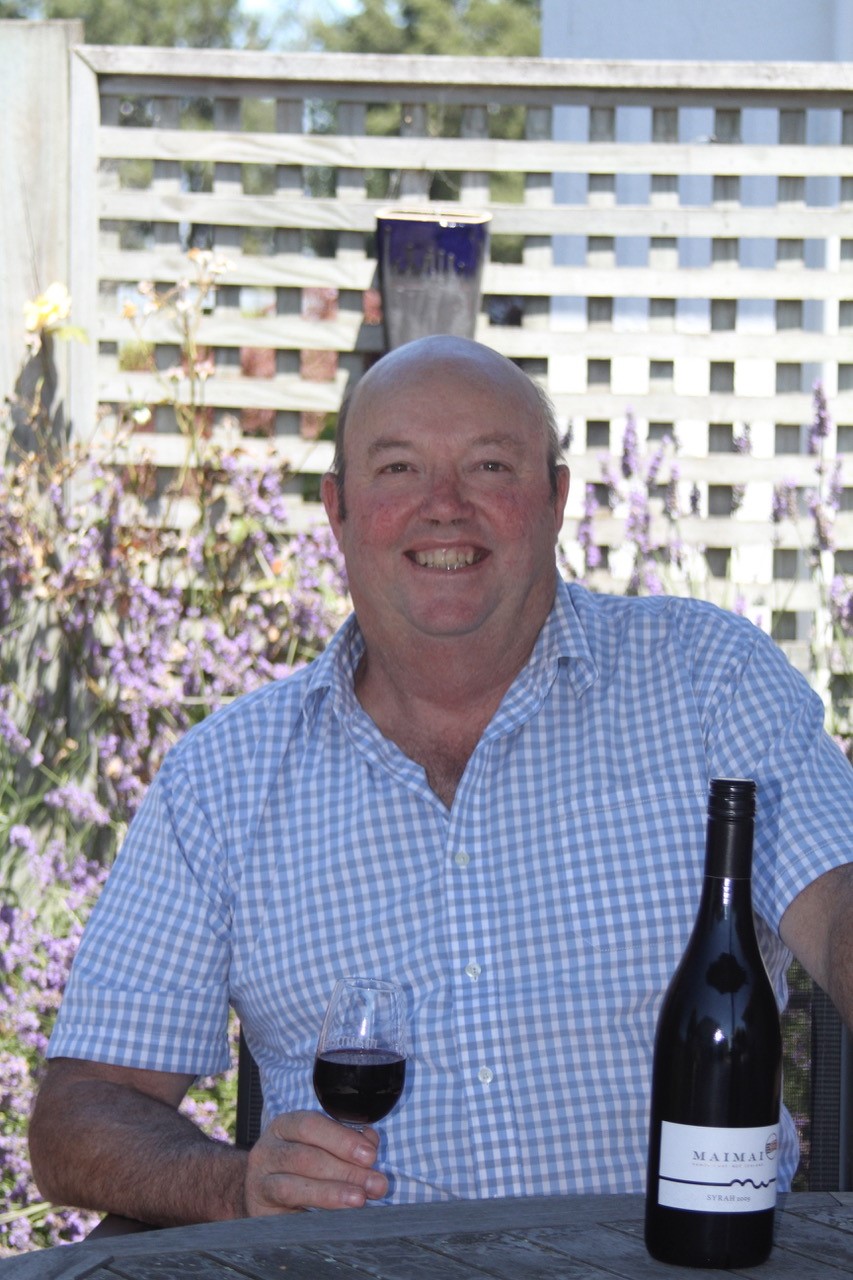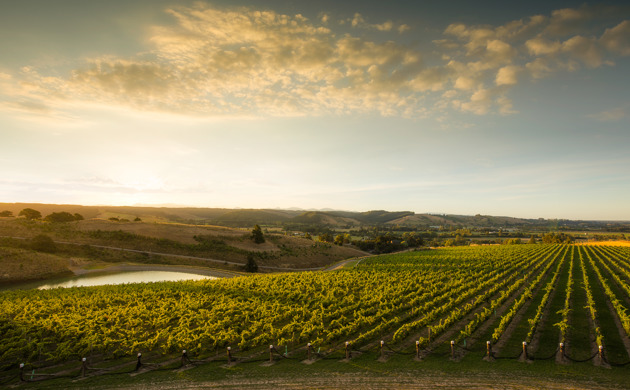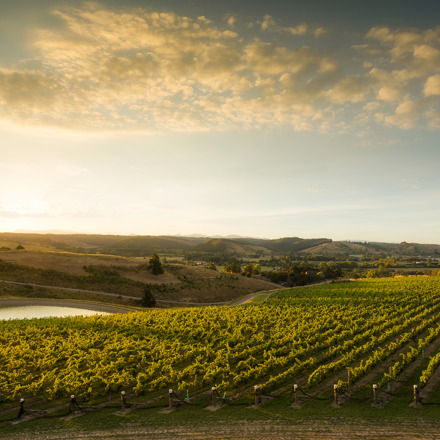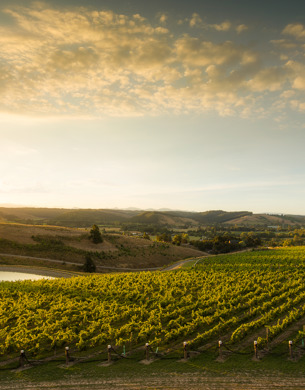Sophie Preece

In the ‘70s and ‘80s you heard of the Wool Board and Meat Board, but I never knew anyone on the committee.” So it was a “great big” culture change when he planted Sauvignon Blanc in Hawke’s Bay in 1994, and within the month had met the Chair of New Zealand Grapegrowers and rubbed shoulders with the board. “You talked to the people, you pruned grapes with them, and went to conferences with them, and field days with them,” he says three decades on, having been recognised as a New Zealand Winegrowers (NZW) Fellow for his services to industry organisations.
Where sheep and beef farming was “very traditional”, with some families in their sixth generation, and on the same land since the mid-19th Century, wine was relatively new, with the exception of West Auckland families like the Corbans, he says. “Almost everyone was first generation, and people like me morphed in from other industries.”
Mal and his wife Bronwyn had their own sheep and beef farm in Dannevirke, and had worked with their two kids through tough economic times to build a successful operation. But conversations with his siblings about the potential of grapes on their childhood farm piqued Mal’s interest.
His three brothers and one sister were all working in other careers, including one brother with a wine distribution company in Hong Kong. So when the wine option was put on the table, Mal put up his hand to manage it.
“To a certain extent there wasn’t a lot of difference,” he says of moving from stock to vines. “You’re growing living organisms and they behave differently, but at the end of the day you have to nurture them when they’re young to give you the production you want when they’re grown. That’s true of cattle and sheep and grape vines.” Whether it’s farming, horticulture or growing pine trees, there’s a “very similar ethos to it if you want to be successful”, Mal continues. “Keep your stock healthy and feed them well, with plenty of good clean water and the right nutrients at the right time. In that respect there wasn’t a lot of difference.”
“From the time we started to the time we had finished, we had gone from a cottage industry of like-minded people sitting around a table talking about how to prune grapes better, to really serious business people and intelligent academics discussing international trade and access to markets.” Mal McLennan
They started with a 15-hectare development on the 120ha block, and named the vineyard Maimai Creek, after the duck shooting shelter they’d built in a creek at the back of the farm as children. And while the advice was to plant a diversity of varieties, and some in Hawke’s Bay were still planting Müller Thurgau, Mal planted it all in Sauvignon Blanc, meeting a growing market for the variety. The vineyard expanded as time went by, always in Sauvignon Blanc, with Mal reasoning that plenty of successful businesses had all their eggs in one basket.
But in 2002 – following a hard-hitting one-off frost – they decided to spread their risk by buying land in the Bridge Pa Triangle, with Merlot and Syrah dominating, alongside Chardonnay and Pinot Gris. While moving from stock to vines was an easy shift, there was “a great big difference” when it came to the culture of wine. As a first-generation grape grower in his late 30s, Mal found himself in a young and welcoming industry, where he was soon asked to take a seat at the table of the Hawke’s Bay Grape Growers Association (HBGG). “Because the industry was quite small you could rub shoulders with the people in it.” And the board conversations back then were largely about research, he says, calling winegrowing a “cottage industry” in the early 1990s. “I was just in the right place at the right time, I guess.
Some of the guys who had been around in the 1970s were looking to retire and younger growers in their mid-30s and early-40s had enough runs on the board to get involved.”
He became Deputy Chair then Chair of HBGG, just in time for the devastating 2001 frost, which had some growers “running around and not knowing what to do”. His own attitude, carried from the vagaries of pastoral farming, was to “go out and prune some vines”, hoping for a better season the next year. “I had an attitude that we were farmers and nature was part of the deal.”
The board’s discussions in 2002 were dominated by the amalgamation of the Wine Institute and New Zealand Grape Growers Council into NZW, which Mal considered “a no brainer”. The industry had gone through “the teething stages of childhood and adolescence and we were getting into that later teenager stage of starting to be mature and make decisions and partnering up,” he says. New Zealand’s industry was “growing exponentially”, he recalls. “It had grown up and we could see the bigger picture of New Zealand being an exporter and sending wine to the UK.”
After 12 years on HBGG, Mal went on to spend six years on the NZW board, stepping up immediately to Chair the committee for Sustainable Winegrowing New Zealand (SWNZ). Maimai had been one of the first vineyards involved in the programme back in 1995, with viticulturist Jim Hamilton, who Mal considered a mentor, urging the industry to take better care of its soils. “He said the soils we were using in Hawke’s Bay were very fragile and we needed to protect them.” There was never any argument about whether SWNZ would happen or not, “just how we would do it”. The emergence of SWNZ involved great collaboration, with people bringing ideas together, Mal recalls. When he became Chair he continued the focus on involving as many people as possible in the constant development of the programme, to ensure it was effective and meaningful.
Many wine regions overseas were launching programmes that smacked of marketing, not authenticity – “talking the talk before they could walk the walk”, he says. “When you scratched the surface, they were found to be very shallow.”
For Mal, being in governance was about playing his part in the wine industry. “I am not a political beast naturally, but I do want to stand up to do the right things.” And in his time, he saw a huge change in the influence wrought by the boards he served.
“From the time we started to the time we had finished, we had gone from a cottage industry of like-minded people sitting around a table talking about how to prune grapes better, to really serious business people and intelligent academics discussing international trade and access to markets.
So it’s been a really big 25-year climb.” Having sold Maimai Creek in 2017, he’s been trying to wind down, but admits he’s “not doing a great job of it”.
Retirement golf has been sidelined by the destruction Cyclone Gabrielle wrought on the green, and the “bits and pieces” work he took up on retirement has spiralled. “Now my part time works takes up 50 hours a week.”
This was first published in New Zealand Winegrower magazine issue 142 and is republished with permission.







